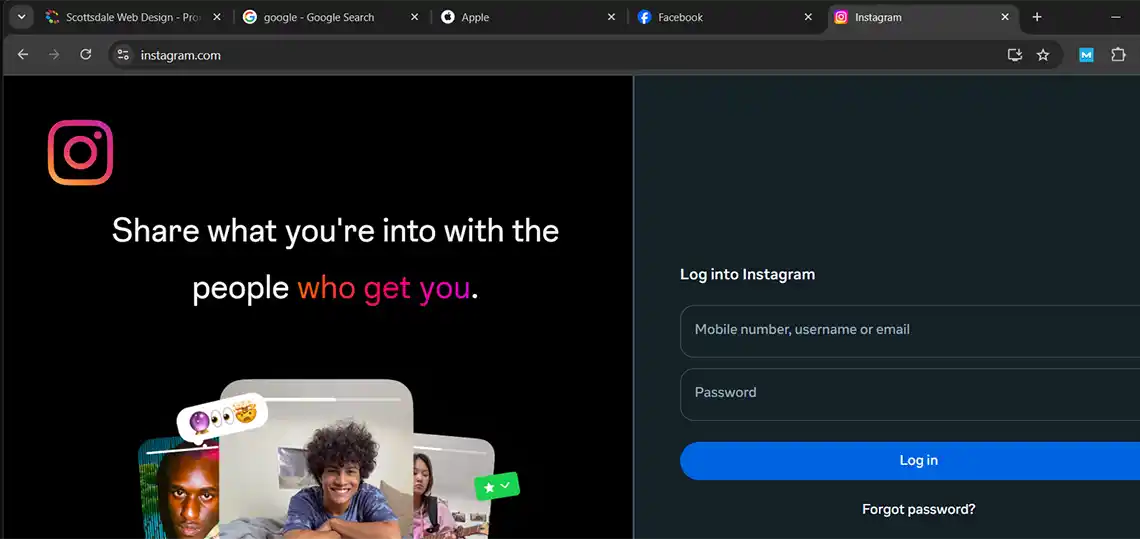Have you ever found yourself with a lot of web browser tabs open on your computer? If so, you may have noticed that it can be hard to go back to a particular website you visited earlier, with so many browser tabs open.
That’s where favicons come in. These tiny icons are super important when it comes to websites because in part, they enhance your brand recognition while making it easier for visitors to more readily identify your website.
What Exactly is a Favicon?
A favicon is that tiny, little icon or graphic symbol, that represents a brand, and is what you see in your web browser tab, directly to the left of a website’s title. By the way, the term, “favicon”, is a shortened combination of the words “favorite” and “icon.” You can think of a favicon as a mini-logo representing the brand. Favicons are graphic files that can be created in different file formats, such as .ico, .png, .svg, .gif, and .jpg.
Is there a Standard Size of a Favicon?
When it comes to favicons, the typical size is 32×32 pixels. Favicons can be created by using either some online tools or in a software program such as Adobe Photoshop.
Where Do Favicons Appear?
Favicons can appear in lots of places. Some of these can be in browser tabs, the bookmarks bar of your browser, your browsing history and even in the SERPs.
Why Favicons Matter
Favicons do more than just look cute. They really can help visitors and your brand in a few significant ways.
Enhances Brand Recognition
A favicon can help people quickly recognize your brand through its website. Think of the Mercedes Benz “Star” or Google’s “G.” These are famous favicons that everyone recognizes right away.
Improves User Navigation and Engagement
Favicons can also clean up the browsing experience by facilitating easier navigation through multiple browser tabs. This in turn helps to improve user engagement.
The SEO Benefits from Using a Favicon
Believe it or not, favicons can help with your SEO efforts. This can happen because user experience and brand awareness go up. While not a direct ranking factor, a better user experience can lead to higher rankings over time.
Increased Click-Through Rates
A cool favicon found in search results can also attract more attention. If people notice your site, they are more likely to click. This in turn, increases your click-through rate (CTR). And this tells Google your site may be more relevant.
Improved Website Authority and Trust
A great favicon can make your website look more professional, which builds trust with visitors. When visitors or users trust your website, this can lead search engines such as Google, to determine that your website has greater “authority.”
Favicon Implementation
Adding a favicon to your website is pretty easy. Next, we will show you how to implement favicons in both HTML and WordPress.
HTML Implementation
In HTML, all you need to do is paste a code snippet into the <head> section. That code snippet would look something like this:
<link rel=”icon” href=” /favicon.png” type=” image/png”>
Or
<link rel=”icon” href=” /favicon.ico” type=”image/x-icon”>
WordPress Implementation
WordPress makes it easy to add a favicon. Go to “Appearance” and then “Customize.” Look for “Site Identity” and upload your favicon. There are also many free plugins that can help you to implement this. Be sure to check how your favicon looks on different browsers and devices.
Common Favicon Mistakes to Avoid
People sometimes make mistakes when they use favicons. Here’s what to look out for.
Using Low-Quality Images
Avoid favicons that are pixelated. They can damage your brand’s image. It’s worth the extra effort to get a high-quality icon.
Ignoring Mobile Optimization
Lots of people use phones to surf the web. Make sure your favicon looks good on mobile devices. These are types of favicons are often called Apple Touch Icons.
Inconsistent Branding
Your favicon should match your brand’s colors. It should fit with your logo and overall style. Stay consistent for best results.
So, as you can see, a favicon is a small, but important asset for any website. It helps with branding, makes a website easier to find/use and can enhance your SEO efforts.
